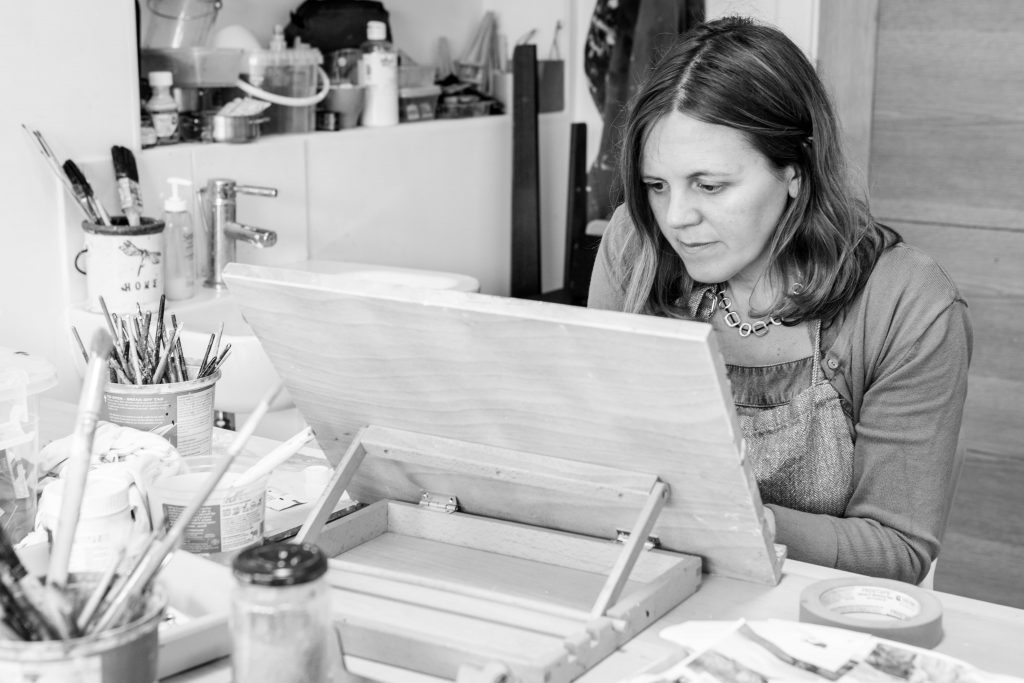Jayne Stokes Painter - Mixed Medium
How important is photography to your work?
Photography plays an important role in the development of my work. The starting point for 90% of my pieces is a personal photograph or a found image. I base my paintings and 3 dimensional pieces on the journeys that I make and the landscape I experience. On each journey I carry a camera and the first step is to take a photograph of those scenes that capture my imagination. The photograph then informs the painting.
What is the value of being a member of the Society of Scottish Artists?
I became a professional elected member of the SSA 3 years ago. This was a great honour for me at the age of 43, as it gave me a sense of recognition for those 23 years spent making art. The SSA is a great organisation to be part of and it has provided me with many opportunities to further my career as an artist.

Outer Hebrides, Watercolour and college
You don’t work on conventional 2D surfaces – How did this approach develop?
Take us through a quick historical synopsis of the development.
I have been fascinated with collecting found objects from the age of 10. I can remember summer holidays as a child looking for objects on the beach to use to make things. When I graduated from Edinburgh College of Art in 1996 my degree show was a combination of painting and installation. I used found objects collected on Portobello beach in Edinburgh and these informed the paintings and drawings I made. At art school I was shown by my then lecturer Glen Onwin, artists like Robert Smithson who explored the concept of creating artworks in the land, not been bound by rigidly sticking to the use of a 2-dimensional surface. This is an idea that has remained with me throughout my career.
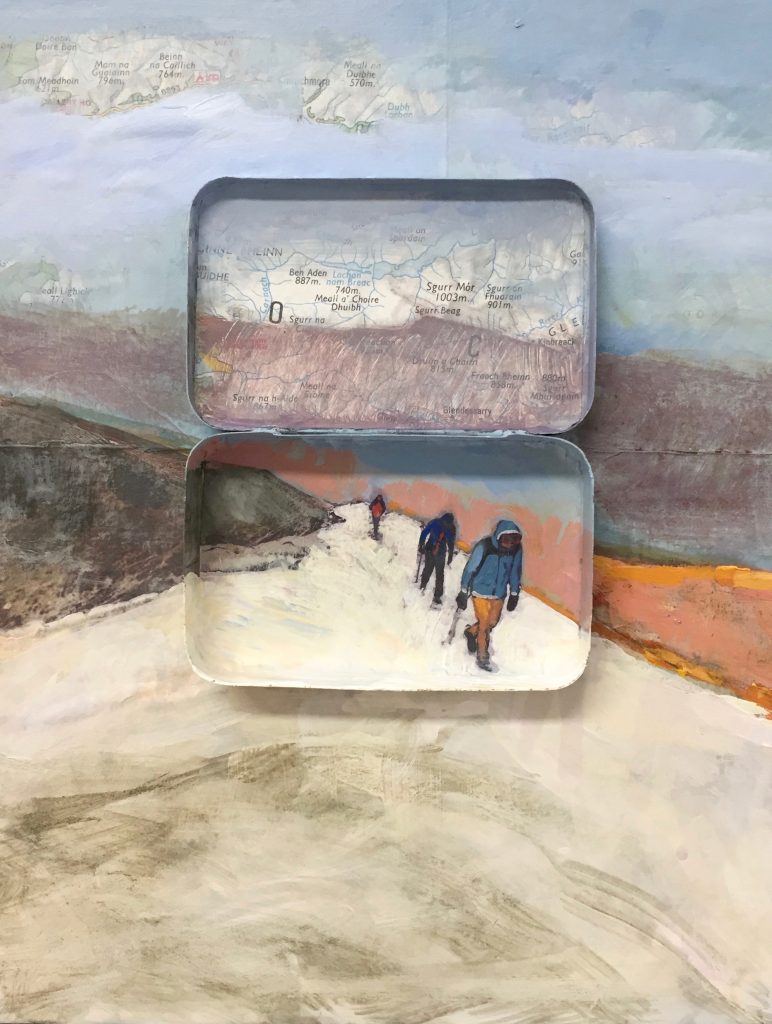
Glencoe, Acrylic, college and found objects
The objects I incorporate in my pieces have aryl history; they have been passed on from somebody or discovered in the landscape when I am on a journey. We discard so much today and I like the idea that I can use an everyday object and transform it into something magical.
Where is your studio?
At home in North Berwick, Scotland.
What are two things that make your studio so special to you?
This is the first time that I have been lucky enough it have a purpose-built studio at home. My husband Ben designed it and I like the fact that I can work all hours as I am a bit of a night owl. The light is also perfect with my intricate work.
Discuss both urban and rural Scotland in your work.
Colour and texture are probably the most important elements in my work. The landscapes that I photograph are those which have a drama about them, quirky or unusual and which tell a story. My preferred subjects are Scottish landscapes. I have lived in Scotland for over 15 years and I never get tired of exploring places. I love the remoteness of the Hebrides, the wildness of the Highlands and the contrast with the city and the urban decay which is depicted in my shopfront pieces.
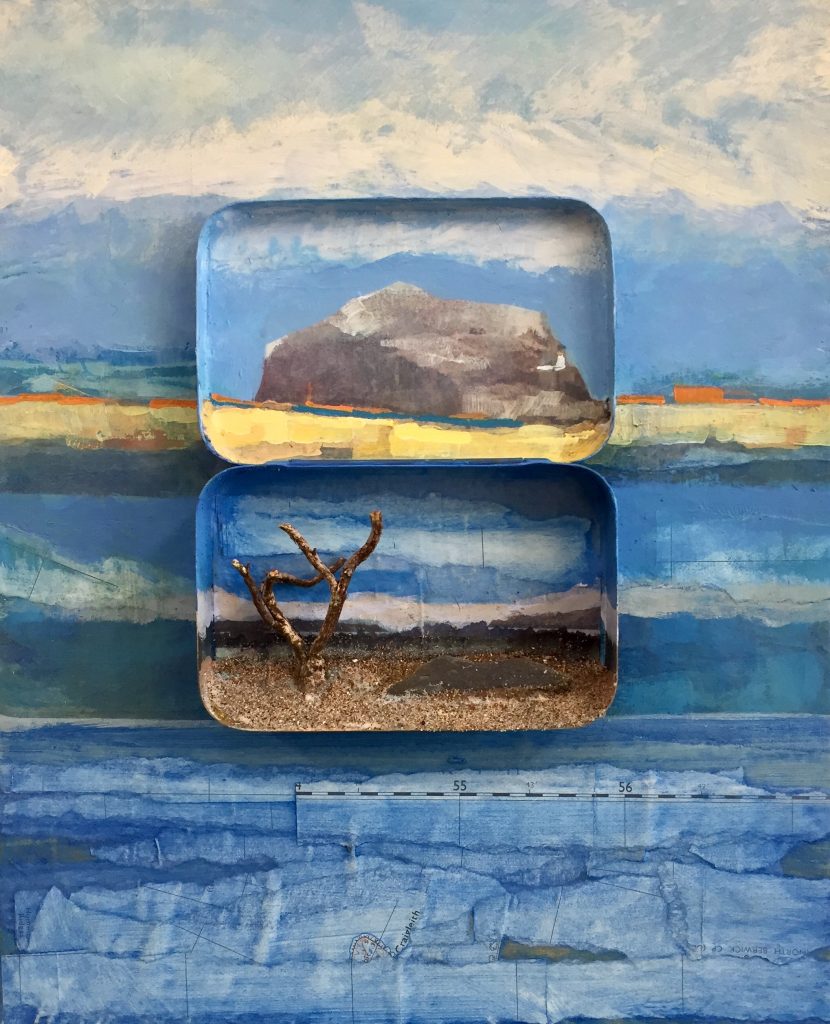
Tin of Bass, Acrylic, college and found objects
Where do you source the found objects in your work?
I collect objects directly from the land and my matchboxes and tins are found in junk shops and on eBay.
Discuss how you use small images combined, to make a large image.
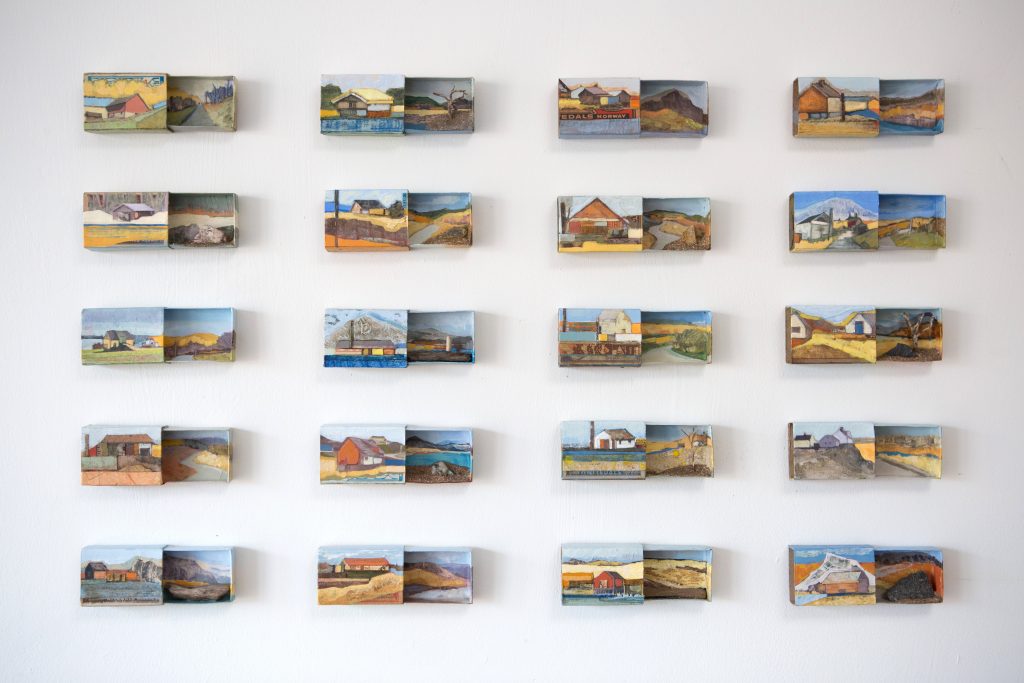
Almost Utopia, Acrylic, college and found objects, matchboxes
I am fascinated by our relationship with images, the value we attach to them and their ability to evoke emotion. This relationship has changed with the ubiquity of digital technology. I recall the enjoyment of looking at family photo albums as a child and reflecting on the places I had visited. Now we are more likely to store away endless files electronically after a brief glance. This process is mirrored by us increasingly transient relationship with places, as our lives become busier and less appreciative of our surroundings. The aim of my work is to make us stop and think carefully about the environment around us. Working on a miniature scale forces the viewer to look closely at the painting and having several small images in one large piece takes the viewer on a journey.
Expand on ‘Cairngorm Climbers’.
Your involvement with them.
Your use of mixed medium in this painting.

Cairngorm Climbers, Acrylic, college and found objects
I discovered an old ordinance survey map of the Cairngorms in my local antique shop ‘The Penny Farthing’. I subsequently found an archive photograph of some climbers in the Cairngorms and I was struck by how the landscape dwarfed the figures. This combination of materials and the gift of an old Altoid tin gave rise to the production on this piece. Tins like this are often pieced together from fragments, random images, found objects and old maps that were collected and accumulated in my studio during the year. The old tins I integrate into each painting are used to select the figures and buildings, to set them apart from their surroundings or provide a different perspective – often functioning like a magnifying glass’.
You have won many prizes – discuss one that helped your artistic career and why?
In 2017 I was awarded the Open Eye Gallery Prize at the Royal Scottish Academy in Edinburgh. This was probably one of the best prizes I have won as it gave me my very first solo exhibition in a prestigious gallery in Edinburgh. Working for a show like this pushed my work further, focused my mind, gave me valuable exposure and increased opportunities elsewhere.
Expand on the use of circles in your work. Using ‘North Berwick Vignettes’ and ‘Digging Deep’’.

North Berwick Vignettes, watercolour, college on paper
I am lucky enough to live by the sea and this has provided inspiration for my work including the circular pieces. In the summer North Berwick is filled with tourists and people looking through binoculars and telescopes at the famous Bass Rock. The circle idea came about because I was thinking about the use of these objects to see and how it makes scenes circular. There is also a long history of artists and photographers especially in Victorian times. A vignette is often added to an image to draw interest to the centre and to frame the central portion of the photo.

Digging Deep, watercolour, college and sand on paper
What are you currently working on?
I am currently working on a new series of matchbox pieces which will be heading to shows in September this year. I will need to make some new journeys to inspire the work and I am thinking about scheduling a trip to Shetland or Orkney.
How important is landscape to the sale of your work?
I like people to relate to the places I paint so the location of the landscape is of fundamental importance to sales of my work. Generally, I only paint Scottish landscapes if I am exhibiting in Scotland, although I do occasionally make exceptions to the rule.
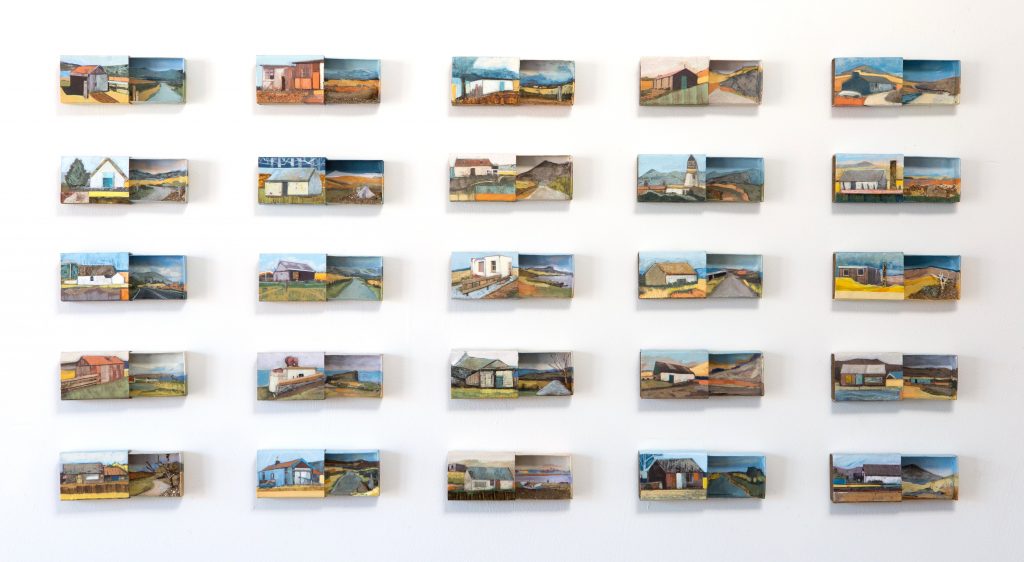
Archipelago, Acrylic, college in matchboxes
Why is painting landscapes now so much a part of your DNA?
I think an important part of being an artist is to reflect the world around you. We are in an age where the landscape and nature are in serious jeopardy. I have children and I want them to appreciate our landscape and if we don’t heighten awareness of these issues then the landscapes, I document will be a thing of the past, simply relics and memories.
Jayne Stokes:
www.jaynestokes.com
Deborah Blakeley, Melbourne, Australia
Interview by Deborah Blakeley, July 2019
Think a colleague or friend could benefit from this interview?
Knowledge is one of the biggest assets in any business. So why not forward this on to your friends and colleagues so they too can start taking advantage of the insightful information the artist has given?
Other artists you may be interested in:


